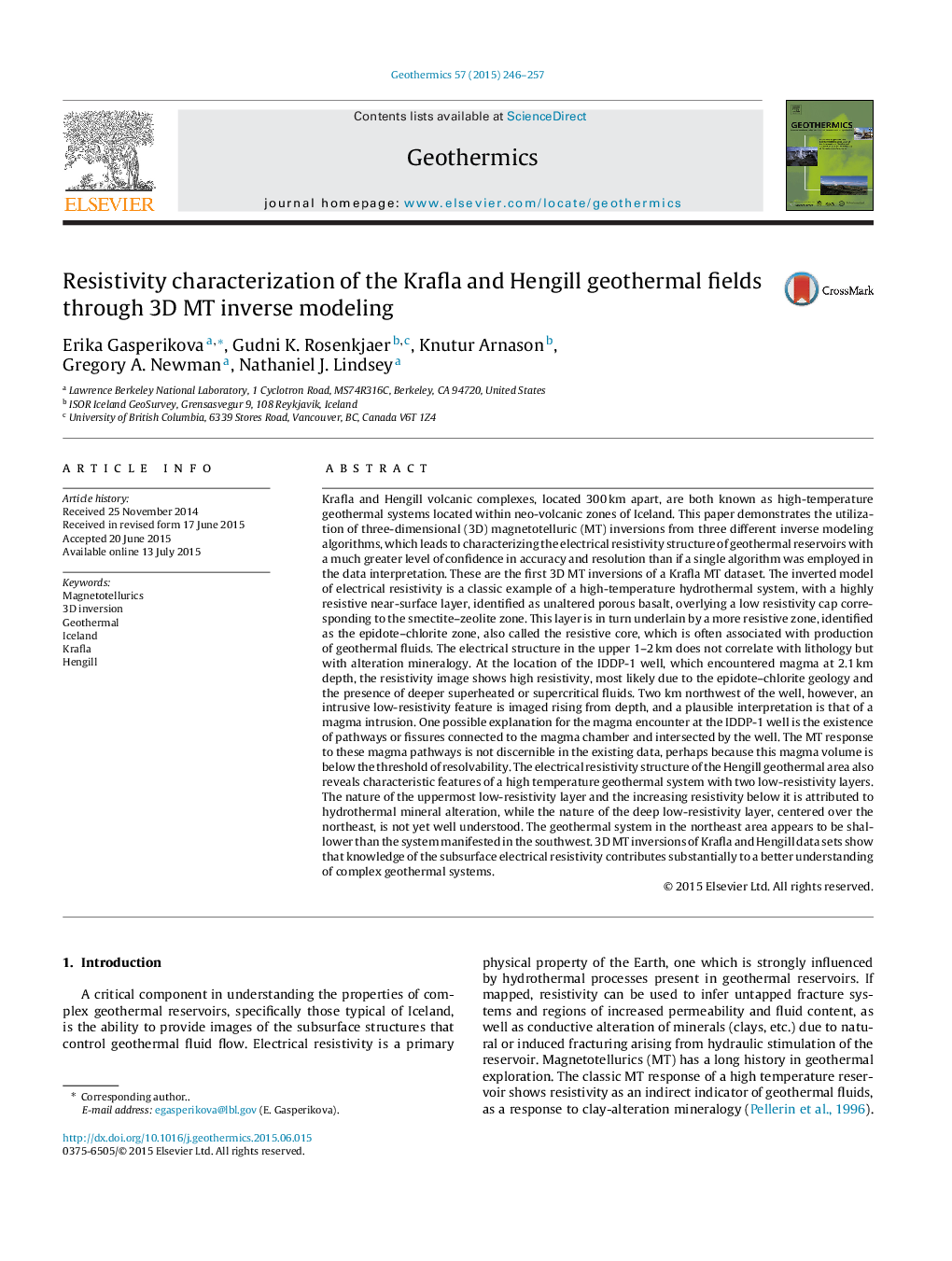| کد مقاله | کد نشریه | سال انتشار | مقاله انگلیسی | نسخه تمام متن |
|---|---|---|---|---|
| 1742241 | 1521911 | 2015 | 12 صفحه PDF | دانلود رایگان |

• Approach to increase confidence in resistivity structures accuracy and resolution.
• These are the first 3D MT inversions of Krafla MT dataset.
• Krafla and Hengill resistivity response is similar to other high temperature system.
• Low resistivity feature NW of IDDP-1 is interpreted as magma intrusion.
• Detailed subsurface resistivity adds to understanding of complex geothermal systems.
Krafla and Hengill volcanic complexes, located 300 km apart, are both known as high-temperature geothermal systems located within neo-volcanic zones of Iceland. This paper demonstrates the utilization of three-dimensional (3D) magnetotelluric (MT) inversions from three different inverse modeling algorithms, which leads to characterizing the electrical resistivity structure of geothermal reservoirs with a much greater level of confidence in accuracy and resolution than if a single algorithm was employed in the data interpretation. These are the first 3D MT inversions of a Krafla MT dataset. The inverted model of electrical resistivity is a classic example of a high-temperature hydrothermal system, with a highly resistive near-surface layer, identified as unaltered porous basalt, overlying a low resistivity cap corresponding to the smectite–zeolite zone. This layer is in turn underlain by a more resistive zone, identified as the epidote–chlorite zone, also called the resistive core, which is often associated with production of geothermal fluids. The electrical structure in the upper 1–2 km does not correlate with lithology but with alteration mineralogy. At the location of the IDDP-1 well, which encountered magma at 2.1 km depth, the resistivity image shows high resistivity, most likely due to the epidote–chlorite geology and the presence of deeper superheated or supercritical fluids. Two km northwest of the well, however, an intrusive low-resistivity feature is imaged rising from depth, and a plausible interpretation is that of a magma intrusion. One possible explanation for the magma encounter at the IDDP-1 well is the existence of pathways or fissures connected to the magma chamber and intersected by the well. The MT response to these magma pathways is not discernible in the existing data, perhaps because this magma volume is below the threshold of resolvability. The electrical resistivity structure of the Hengill geothermal area also reveals characteristic features of a high temperature geothermal system with two low-resistivity layers. The nature of the uppermost low-resistivity layer and the increasing resistivity below it is attributed to hydrothermal mineral alteration, while the nature of the deep low-resistivity layer, centered over the northeast, is not yet well understood. The geothermal system in the northeast area appears to be shallower than the system manifested in the southwest. 3D MT inversions of Krafla and Hengill data sets show that knowledge of the subsurface electrical resistivity contributes substantially to a better understanding of complex geothermal systems.
Journal: Geothermics - Volume 57, September 2015, Pages 246–257